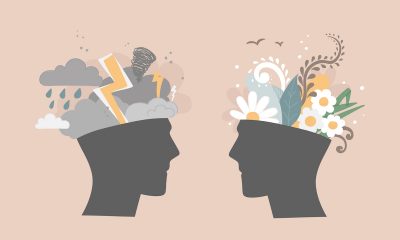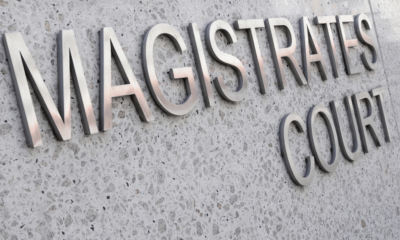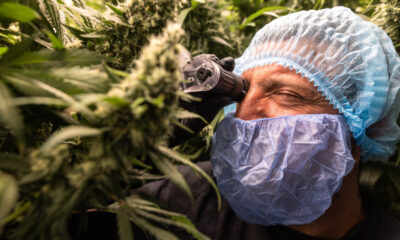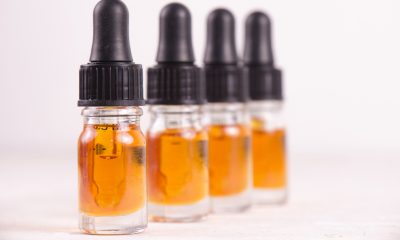Whether for fibre, food or medicine, cannabis has been a part of life for thousands of years. The stigma around it, however, is relatively new.
Read on for an overview of the history of cannabis in the UK.
Humans and cannabis have had a symbiotic relationship since the thawing of the Ice Age. Cannabis has been cultivated for fibre, food, medicine, religious purposes, and recreational amusement for around 12,000 years, spreading across Eurasia to almost every corner of the world through exploration, migration and trade.
The history of cannabis in the UK is lengthy and complex, spanning from the Bronze Age to Queen Victoria’s menstrual medication and beyond.
The illegal status of cannabis in the UK is a relatively recent phenomenon, with prohibition being more about political prejudices rather than any inherent negative property of the plant itself. Even our newly instated King Charles has acknowledged the benefits of the cannabis plant. When it comes to historical significance, cannabis could arguably be a more important crop to the UK — both because of its material and medicinal uses throughout history — than tea or tobacco.
Early history: Bronze Age fibres to Mediaeval herbal remedies
- 850 BC (ish): Cannabis could have been farmed in the UK as early as the Bronze Age. In the 1990s, archeologists stumbled across evidence of hemp fibres amongst a hoard of Bronze Age weaponry and other items at a site in St Andrews, Scotland.
- 301 AD: Roman Britain cultivated cannabis for rope, sailcloth and other important materials. The Edict of Diocletian (published in 301 AD), a record of goods and services produced and traded in Roman Britain, cites hemp fibre used to make rope and sailcloth. Cannabis fibres and seeds have been found at numerous Roman-era sites across the UK, particularly York and Hull.
- 400 AD (ish): The Anglo-Saxons invaded the British Isles and, similar to the Romans, farmed hemp for fibre to create cords, sails, fishing nets, clothing and more. Romans also likely pressed the seeds for oil.
- 476 – 1450 AD: Strong evidence suggests that hemp farming for fibre production continued — and expanded — throughout mediaeval England. The traditional hemp industry was centred near Hampshire (named after hemp), and areas across the UK with ‘Hemp’ or ‘Hamp’ in the name were hubs of hemp production. Records from the mediaeval period indicate cannabis was an important medical and therapeutic tool, and was used as an anaesthetic and to treat conditions including gout, weight loss, urinary infections and birthing issues (among others). Areas in Scotland, particularly monastic communities, grew cannabis for both fibre and medicinal purposes. The famous Abbess Hildegard von Bingen (1098 to 1179 AD) wrote extensively about the positive (and negative) physical and mental effects of cannabis in “Physica”. While she was German and not based in the UK, her influence on a range of topics — from art and philosophy to medicine — likely influenced the monasteries of Scotland.
“It is gentle and profitable to the stomach, taking away a bit of its mucus. It is easy to digest, diminishes bad humors, and fortifies good humors. Nevertheless, if one who is weak in the head, and has a vacant brain eats hemp, it easily afflicts his head. It does not harm one who has a healthy head and full brain,” – Excerpt from Physica
- 1484: The use of cannabis as a medicine was essentially demonised by the Papal Bull of Innocent VIII which equated herbalists — many of whom were practising in the British Isles — to witches and declared hemp-based therapies ‘an unholy sacrament of satanic rituals’.
The Elizabethan Era: Cannabis cultivation in the UK reaches its peak
- 1533: As the importance of England’s supreme seafaring military grew, so did the demand of hemp fibre for ropes, sails, uniforms, and numerous other materials important to the Crown. King Henry VIII ordered farmers to dedicate a percentage of their land to growing hemp, or they would face a fine.
- 1563 – late 1500s: Queen Elizabeth I extended King Henry VIII’s decree and increased the penance to £5 for not complying. At this point however, farmers were reportedly sick of growing the plant, as the processing of hemp for fibre (also known as ‘retting’) left ‘foul odours’, and farmers could reportedly earn more money by growing a range of other crops. Thus began a decline in hemp farming in the UK.
- 1597: Despite being associated with demonic herbalism, cannabis’ medicinal advantages were featured in the publication Herbal of John Gerard.
“[It] consumeth wind and drieth up seed [semen]” – Excerpt from Herbal of John Gerard
- Early 1600s: British colonies in Canada and Virginia began to grow hemp.
- 1653: Cannabis’ many medicinal uses — including as an antiseptic, anti-inflammatory and antispasmodic — were included in a version of the London College of Physicians’ Pharmacopoeia published by botanist, herbalist and physicist Nicholas Culpeper.
Victorian era: medicine fit for a Queen
- 1830s: Scotsman William Brooke O’Shaunghnessy discovered the medicinal properties of cannabis while studying in India. O’Shaunghnessy was influential in bringing ‘Indian hemp’ (Cannabis indica) to the UK as a medicine for a range of ailments.
- Mid-late 1800s: As the popularity of Cannabis indica as a medicine increased, it became a regular staple of physicians and medical practitioners. For the first time, cannabis was available in tinctures, pills and extracts.
- 1890: Queen Victoria’s personal physician, Sir Russell Reynolds, was a firm believer in cannabis medicine and prescribed cannabis for the Queen’s menstrual cramps.
- 1894: After extensive observation of cannabis use in India, the India Hemp Drugs Commission recommended that cannabis should be taxed and regulated rather than prohibited, citing ‘how little injury society has hitherto sustained from hemp drugs’. The Indian Hemp Drugs Commission Report concludes that Cannabis has a number of positive medical, emotional and social benefits.
- 1899: British pharmacologist Walter Ernest Dixon published a paper on ‘the pharmacology of Cannabis indica’, where he not only describes cannabis as a ‘food accessory’, but was also one of the first to point out how smoking cannabis can elicit more immediate effects than alternative consumption methods.
“In cases where an immediate effect is desired the drug should be smoked, the fumes being drawn through water. In fits of depression, mental fatigue, nervous headache, and exhaustion a few inhalations produce an almost immediate effect, the sense of depression, headache, feeling of fatigue disappear and the subject is enabled to continue his work, feeling refreshed and soothed” – excerpt from The pharmacology of Cannabis indica
- Late 1800s: Despite more recognition from the medical community around the benefits of cannabis, it was still not widely used in the 19th century. Around the same time, a stigma began to form against its use. This is often linked to colonial prejudices and general racism against native populations and how they were perceived to consume or use cannabis.
Demon drug: entering the modern era of cannabis prohibition
- 1923: The League of Nations called for tighter controls over cannabis use. Britain, however, asked for more evidence before any controls were imposed, mainly due to the positive findings of the India Hemp Drugs Commission.
- 1928: The Dangerous Drugs Act became law, making recreational cannabis use illegal in Great Britain. Despite cannabis still being medically legal, doctors reportedly lost interest in prescribing cannabis as it became increasingly viewed as a dangerous drug rather than a beneficial medicine.
- 1952: The first UK ‘cannabis bust’ took place at the Number 11 Club, Soho.
- 1967: Keith Richards and Mick Jagger of the Rolling Stones were caught with cannabis and sentenced to prison for marijuana possession. The same year, more than 3,000 people joined a mass ‘Smoke-In’ at London’s Hyde Park.
- 1968 – 1969: A committee set up by the Home Office concluded that cannabis is no more harmful than alcohol or tobacco and recommended that restrictions on use should be lifted. They were not. Instead, the 1969 Misuse of Drugs Act in England instated a maximum of five years’ imprisonment for cannabis possession.
- 1970s: Popularity of Bob Marley and Rastafarian artists in the UK highlights a spiritual, religious use of cannabis.
- 1971 and 1979: An Advisory Council on the Misuse of Drugs [ACMD] was created to guide government policy. In 1979, the Council suggested lowering the classification of cannabis to class C under the Misuse of Drugs Act. The government did not abide by the recommendation.
- 1980 and 1991: Over 20,000 cannabis convictions were handed out in the UK in 1980. The number more than doubled in 1991, reaching 42,209.
- 1992: The Home Office lifted restrictions on hemp cultivation and Hemcore became the first British company to legally grow industrial hemp.
- 1993 and 1998: Home Secretary Michael Howard increased maximum fines for possession from £500 to £2,500, emphasising the ‘criminal’ nature of cannabis. Four years later, The Independent on Sunday newspaper launched a ‘decriminalise cannabis’ campaign.
- 1998: When visiting a daycare Prince Charles asked a woman suffering from MS whether she had tried cannabis to help ease pain caused by her condition. He reportedly said something along the lines of, “I understand that under strict medical supervision, it is one of the best things for it.”
- 2001 – 2009: Home Secretary David Blunkett moved cannabis from Class B to Class C, making possession a non-arrestable offence. In 2004, this was formalised into law. In 2009, it went back to being Class B under the reasoning that it was more harmful to the body than previously thought.
- 2018: Medical cannabis was legalised in the UK following two high profile media campaigns which centred around children with life-threatening epileptic seizures who had experienced significant improvements from cannabis.
- 2022: A cohort of conservative police commissioners called for cannabis to be reclassified as a Class A drug, calling it just as harmful as cocaine and citing the ‘gateway drug’ argument. According to a Home Office source, Home Secretary Suella Braverman was ‘receptive’ to the reclassification.
Cannabis by Nellie
Based on findings in the book, Cannabis: Evolution and Ethnobotany by Mark Merlin and Robert Connell Clarke, as well as additional historic and recent sources.

 News6 months ago
News6 months ago
 Science5 months ago
Science5 months ago
 Industry6 months ago
Industry6 months ago
 News6 months ago
News6 months ago
 News5 months ago
News5 months ago
 Health5 months ago
Health5 months ago
 News5 months ago
News5 months ago
 Health3 months ago
Health3 months ago












